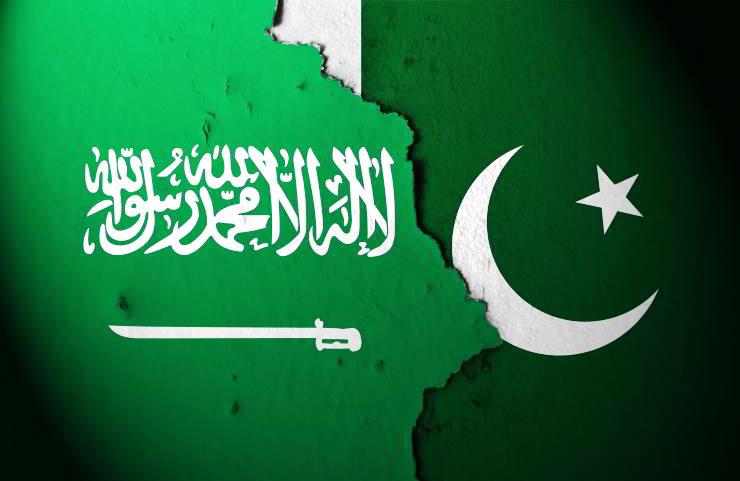Saudi-Pakistan Mutual Defence Pact: Implications for the Middle East and Asia.

Saudi Arabia and Pakistan’s mutual defence pact marks a turning point in Gulf and Asian security: it binds financial and nuclear power, fuels the US–China rivalry, unsettles India and IMEC, and may trigger a wave of new alignments as Israel’s campaigns heighten the regional race for deterrence.
The mutual defence pact signed by Saudi Arabia and Pakistan, on September 17th, reverberates across the Middle East and Asia, marking a major shift in global alignments.
In this ‘geopolitical marriage’, the relationship appears highly complementary: Saudi Arabia, as leader of the Islamic world and a major economic power, is set to become Islamabad’s largest external financier in the 2025-2026 fiscal year (with over $6 billion in loans and deposits); Pakistan, meanwhile, possesses nuclear weapons and can thus theoretically extend its nuclear umbrella to the kingdom.
The deal also unsettles India, which has enjoyed steadily warming relations with Riyadh in recent years and sees the pact as a potential setback for projects such as the India–Middle East–Europe Economic Corridor (IMEC), launched during the 2023 G20 Summit in New Delhi. At the same time, it may indirectly draw India and Israel into even closer strategic alignment.
For both Riyadh and Islamabad, the agreement functions as a counter-alignment tool. Saudi Arabia seeks protection against Iran and Israel, while Pakistan looks for allies to deter India. More broadly, the Saudi-Pakistani pact pushes the United States further from the Western Indian Ocean while pulling China somewhat closer.
For Riyadh, it serves to bolster deterrence at a time of waning American security guarantees; and by deepening ties with Pakistan, a close partner of Beijing, the kingdom is hedging its bets. Yet this recalibration comes at a cost: it complicates Saudi Arabia’s flourishing partnership with India, and casts doubt over the political trust required to advance IMEC as a credible alternative to China’s Belt and Road Initiative (BRI).
The Strategic Mutual Defence Agreement (SMDA) “states that any aggression against either country shall be considered an aggression against both”, and “aims to develop aspects of defense cooperation between the two countries and strengthen joint deterrence
against any aggression”.
Although no further content details have been made public, the pact “encompasses all military means”, from armed forces to nuclear cooperation and intelligence sharing. This entente is also designed to support Saudi defence autonomy in the long-term: defence industry collaboration, technology transfer, military co-production, capacity-building and training are part of the pact.
This agreement develops from long time and strict cooperation between Saudi Arabia and Pakistan: from the “Treaty of Friendship” signed in 1951 to the 1982 Organization Agreement that allowed Pakistani troops to station in the kingdom for training, inked three years later the Islamic Revolution in Iran.
The current agreement has three immediate implications. First, it further binds Gulf and Asia security, boosting strategic interdependence. Second, it adds a new security actor, Islamabad, the only Muslim-majority nuclear power, to the shifting Gulf security equation, with an Asian power formally entering this chessboard. Third, it brings Riyadh into the geopolitics and disputes of Southern Asia, from Pakistan’s border tensions with India and Iran, to Taliban’s Afghanistan.
Announced after Israel’s shocking attack in Qatar against Hamas (9 September), the long-negotiated agreement sends a timely message to Tel Aviv, even though it has a wider geopolitical breadth. For Saudi Arabia, the mutual defence pact is part of the diversification policy -also in the defence field- the kingdom is pursuing to cope with the American deterrence’s decline in the Middle East.
Since years, Riyadh is pushing for strengthened security guarantees from Washington, dreaming of a mutual defence treaty. But none of this has become reality, included the acquiring of F-35 fighter jets. This has combined with Trump presidency’s “unwavering support” to the choices the Israeli government is making in the region after October 7th, resulting in US’ strike in Iran and the ineffectiveness to prevent that allied Qatar was targeted twice.
The pact with Pakistan is about Gulf security: the Saudi main goal is restoring defence and deterrence vis-à-vis Iran, after the Iranian grey attacks against Saudi Aramco (2019), and more recently at the US’ Al Udeid base in Qatar (June 2025). However, the mutual defence pact with Pakistan serves to Riyadh as a double deterrence tool, shielding the kingdom also from Israel, whose unrestrained military conduct has generated fears across the region, especially after the attack in Doha.
For Pakistan, the deal represents both opportunity and risk. Islamabad has gained renewed relevance as the only Muslim-majority nuclear power and long-time security partner for Riyadh. The pact bolsters its claim to be a central player in Islamic geopolitics and secures critical Saudi financial lifelines at a time of economic fragility.
Yet it also risks antagonising Washington and Delhi, both of which have grown increasingly wary of Pakistan’s nuclear doctrine and missile programme. While the pact elevates Pakistan on the Gulf stage, it may deepen India’s determination to isolate Islamabad diplomatically, while raising concerns in the US and Israel about nuclear proliferation.
Also, the agreement could revive American and Israeli fears that Pakistan’s nuclear and missile programmes pose a direct threat to Israel, inviting greater scrutiny and the possibility of new sanctions on Islamabad’s ballistic missile development.
If the pact ends up pushing India and Israel closer together, while simultaneously unsettling Washington, Pakistan may find itself squeezed on multiple fronts. Balancing its “geopolitical sweet spot” between China, Iran, Saudi Arabia, and the US – former officials warn – will become even more delicate, and a deal meant to boost Pakistan’s stature could risk backfiring into a strategic setback.
The mutual defence pact between Saudi Arabia and Pakistan can impact Riyadh and Islamabad’s partnerships with, respectively, India and Iran. By tightening defence relations with Pakistan, Saudi Arabia engages with a neighbour of Iran which now formally takes side in the Gulf.
Since the attack in Qatar, Tehran is working to rebuild political dialogue with the GCC states, since it needs to break regional isolation to better counter Israel: Ali Larijani, who currently heads Iran’s Supreme National Security Council, has visited, on September 16th, the Saudi crown prince Mohammed bin Salman in Riyadh.
In this context, Tehran will not likely stop its confidence-rebuilding efforts towards the GCC states because of the Saudi agreement with Pakistan. Conversely, the growing economic partnership between Saudi Arabia and India, which is Islamabad’s historical rival, could be affected by this geopolitical development. New Delhi imported energy from Riyadh accounts for 18% of its total, and the two countries regularly conduct joint naval and land forces exercises. Both Saudi Arabia and India signed the preliminary agreement for the IMEC in 2023.
For India, the defence pact raises multiple strategic alarms. It coincides with one of the warmest periods in Saudi-Indian relations, marked by deepening energy trade, high-level political visits, and joint military drills. New Delhi fears that Riyadh’s embrace of Islamabad could dilute its own standing as Saudi Arabia’s preferred Asian partner.
More concretely, the IMEC project – in which Saudi Arabia, along with the UAE, should become a central hub linking India to Europe – may lose momentum if Saudi strategic calculations shift towards Pakistan. Even if trade cooperation continues, political trust will be harder to sustain, casting uncertainty over a corridor that was presented as a counterweight to China’s Belt and Road Initiative, all the more so as Riyadh is a member country of the BRI.
The Indian security establishment also worries that the pact might embolden Pakistan in its rivalry with India. Although Saudi officials insist that the agreement is not directed against New Delhi, the symbolism of Riyadh formally binding itself to Islamabad cannot be ignored. Indian analysts suggest that this development could accelerate New Delhi’s defence partnership with Israel, with whom it already shares intelligence and advanced weapons cooperation.
The growing perception of an emerging Saudi-Pakistan security axis may thus indirectly push India and Israel into a closer strategic embrace. While India will likely avoid any public rupture with Riyadh, it could quietly recalibrate its foreign policy by intensifying ties with Israel, the US, and European partners, sharpening its “multi-alignment” approach.
The mutual defence agreement between Saudi Arabia and Pakistan marks a major development not only for security balances in the Gulf and Asia, but also for the global influence race between the US and China. Therefore, more mutual defence pacts could follow, between countries in the MENA and in Asia.
Amid Israel’s ongoing campaigns, and now likely also to counterbalance Riyadh and Islamabad, many Middle Eastern countries see an urgent need to bolster their national deterrence.
With the Israeli attack in Doha playing the accelerating factor, Saudi Arabia and Pakistan have opened a still unpredictable season of geopolitical reshuffles in the Gulf and Asia, with national security as main guiding star.
At the same time, the agreement could spur new alignments outside the region: India, unsettled by Riyadh’s embrace of Islamabad, may deepen its already close partnership with Israel, creating a counter-axis of cooperation that stretches from South Asia to the Eastern Mediterranean. This shift also casts new uncertainty over the India-Middle East-Europe Economic Corridor (IMEC), whose success also relies on sustained Saudi-Indian political trust. (Open Photo: Saidu Arabia and Pakistan flags. Shutterstock/Hapelinium)
Eleonora Ardemagni and Nicola Missaglia/ISPI



